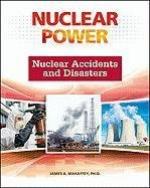|
This section contains 1,048 words (approx. 4 pages at 300 words per page) |

|
On June 26, 1995, officials from the U.S. Environmental Protection Agency descended on a shed behind a suburban house in a small Michigan town for an unusual job: They had to cart off the dangerously radioactive materials that teenager David Hahn had fashioned during his extended experiments with nuclear technology. Inspired by his Boy Scout merit badge in atomic energy, Hahn had attempted to build a primitive nuclear reactor. A reactor turned out to be beyond Hahn's reach, but he did manage to make a nuclear mixture that started to become increasingly radioactive each day.
In order to conduct his nuclear experiments, Hahn decided he needed two things. One was technical nuclear information, some of which he got in phone calls to unsuspecting officials at the NRC. The other was a significant amount of radioactive materials. He was able to obtain these from...
|
This section contains 1,048 words (approx. 4 pages at 300 words per page) |

|




